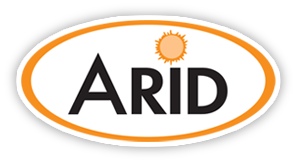THE STORY ON BATTERY BACKUP PUMP SYSTEMS
Let’s start out something near and dear to all customer's hearts & wallets: the price range. You can get a battery backup system for as little as $200, or you can purchase the Rolls Royce of systems for $3000. The old adage applies: You get what you pay for! However, we developed our unit to be priced mid-ranged with the performance level of the high-end system. So let us get into the differences between the models. There are 3 main distinctions you have to know before making an educated purchase.
THE PUMP
In a normal residential application, your primary sump pump is a 1/3 horsepower pump, and in some extreme cases, you might have a 1/2 horsepower pump. The differences between these pumps is essentially the output of water — how many gallons of water per hour (gph) can get pumped up and out. The 1/3 pump with a 1.5″ discharge pipe (typically PVC) with a head (the vertical length of the pipe going up the wall) of 5 feet can expel 3,000 gallons per hour. The larger 1/2 horsepower pump can do 4,000 gph. So with that said, in my opinion, if you are going to back up your primary pump with a battery backup unit, you do so with a pump that is EQUIVALENT or stronger in output. Now, once you start looking into battery backup pumps, you will find that most pumps do NOT have the discharge capacity as your primary pump. For instance, the Basement Watchdog BWE (the least expensive), retails for $250 plus the cost of a battery, and the output is 1500 gph with a head of 5 feet. Now look at the Zoeller Sentry 510 model, which retails for $900, and has an output of 2,040 gph. In some cases, the 510 model might be strong enough to expel the water in a mild storm, but in most instances, the pump will get overwhelmed and water will spill out onto the floor. The custom backup system that we devised and recommend includes matching your size pump, whether you have a 1/3 HP or 1/2 HP, we have you covered. Knowing that your system is up to par with your normal water output will give you peace of mind when the big storm hits.
THE BATTERY
Most units come with a 12 volt battery which looks like a car battery, and is usually a marine battery. This powers the pump when the electricity goes out. Sometimes there is maintenance with these batteries, such as having to fill them with water and/or battery acid. The batteries that we offer are a Duracell 100 amp hour, AGM batteries (absorbed glass mat.) AGM is the newest technology in 12 volt batteries which gives the battery the most life. I equate it to a lithium battery versus an alkaline. Our batteries are maintenance free and is glass enclosed, so leaks are a thing of the past.
THE INVERTER
The inverter is the mechanism attached to the battery and is the brains of the backup system. In a nutshell, it converts direct current (DC) to alternating current (AC) and it charges the battery backup when it’s in use. It also ‘trickle charges’ the unit when not in use, so that the battery is at its optimal capacity. We sought out a company that their specialty and only form of business is making inverters. We nabbed their inverter for a sump pump application and it works tremendously. The one correlation between inverters that I’ve seen is that the cheaper units have smaller inverters compared to the more expensive ones. ‘The bigger the better’ doesn’t always apply, but I think in this case it does.
